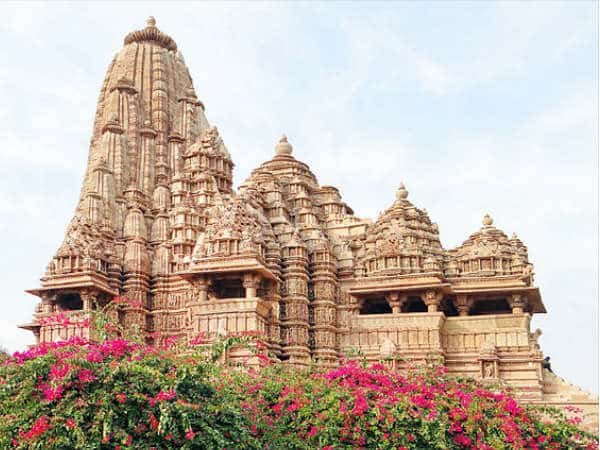Table of Contents
Introduction to Narshingh Temple
Nestled in the picturesque town of Joshimath in Uttarakhand, the Narshingh Temple is a sacred Hindu site that draws thousands of pilgrims every year. The temple’s location amidst the pristine Himalayas adds to its spiritual allure and natural beauty.
Significance in Hinduism
Dedicated to Lord Narasimha, an incarnation of Lord Vishnu, the Narshingh Temple holds great religious significance in Hinduism. It is believed that the deity protects the pilgrims en route to Badrinath, one of the most revered pilgrimage sites in India.
Location and Landscape
Joshimath, a small town in the Chamoli district of Uttarakhand, serves as the gateway to several Himalayan trekking trails and pilgrimage sites. The town itself is surrounded by lush greenery, snow-capped peaks, and an air of tranquility that adds to the spiritual experience of visiting the Narshingh Temple.
Lord Narasimha: The Deity
Lord Narasimha is a unique and powerful deity in Hindu mythology, known for his fierce yet compassionate nature.
Avatar of Lord Vishnu
Narasimha is the fourth avatar of Lord Vishnu, who took this form to protect his devotee, Prahlada, from the demon king Hiranyakashipu. The deity is depicted with a human torso and the head of a lion, symbolizing the perfect balance between physical strength and divine wisdom.
Mythological Background
The story of Lord Narasimha is deeply rooted in Hindu mythology, where he is revered as a symbol of divine intervention and protection. His fierce form serves as a reminder that God will go to any length to protect his devotees from evil forces.
The Rich History of Narshingh Temple
The Narshingh Temple has a fascinating history that dates back centuries, showcasing the timeless nature of spirituality and devotion in the region.
Ancient Origins
The exact origins of the temple are shrouded in mystery, but it is believed to have been established by Adi Shankaracharya, a revered Hindu philosopher and theologian, in the 8th century. The temple has since been a focal point of religious and cultural activities in the region, attracting pilgrims and visitors from far and wide.
Cultural Significance
Over the centuries, the Narshingh Temple has become deeply ingrained in the local culture and traditions of Joshimath. It is not only a place of worship but also a symbol of the rich heritage and history of the area.
Architectural Marvels of the Temple
The Narshingh Temple boasts stunning architectural features that are a testament to the skill and craftsmanship of ancient builders.
Stone-carving Techniques
The temple’s intricate stone carvings depict various scenes from Hindu mythology and the life of Lord Narasimha. These carvings are a prime example of the remarkable stone-carving techniques that have been passed down through generations.
Religious Iconography
The walls and pillars of the Narshingh Temple are adorned with religious iconography, featuring various gods and goddesses from Hinduism. This artwork not only adds to the temple’s visual appeal but also deepens its spiritual atmosphere.
Spiritual and Religious Practices at Narshingh Temple
Pilgrims and devotees visiting the Narshingh Temple partake in a variety of spiritual and religious practices that strengthen their connection with the divine.
Religious Ceremonies
Daily rituals and prayers are conducted at the temple, allowing devotees to immerse themselves in the divine presence of Lord Narasimha. Special ceremonies and festivals are also held throughout the year to celebrate significant events in Hinduism.
Traditional Rituals
Visitors to the Narshingh Temple often perform traditional rituals like lighting lamps, offering flowers, and participating in group prayers. These rituals allow them to express their devotion and seek the blessings of Lord Narasimha.
The Sacred Pilgrimage to Narshingh Temple
The journey to Narshingh Temple is as much about the destination as it is about the pilgrimage itself.
Devotion and Spirituality
Undertaking the pilgrimage to Narshingh Temple is an act of devotion and spirituality for many Hindus. The trek through the breathtaking Himalayas serves as a metaphor for the spiritual journey towards enlightenment and self-realization.
Trekking through the Himalayas
The pilgrimage to Narshingh Temple often involves trekking through challenging terrain and high altitudes. Despite the physical demands, pilgrims find solace in the serene landscape and the knowledge that they are walking in the footsteps of countless devotees who have come before them.
Tourism and Attractions around Narshingh Temple
Aside from the temple itself, there are several attractions in and around Joshimath that showcase the region’s natural beauty and cultural heritage.
Exploring the Natural Beauty
Visitors to the area can explore the lush forests, pristine rivers, and snow-capped peaks that make the Himalayas a nature lover’s paradise. Trekking, camping, and bird-watching are just a few of the activities that can be enjoyed in the vicinity of the Narshingh Temple.
Experiencing the Local Culture
The people of Joshimath are known for their warm hospitality and vibrant culture. Travelers can interact with locals, visit nearby villages, and partake in traditional festivities to gain a deeper understanding of the region’s customs and way of life.
Conclusion
The Narshingh Temple in Joshimath, Uttarakhand, offers a unique blend of spirituality, history, and natural beauty that draws visitors from all over the world. Whether you are a devout pilgrim, a history enthusiast, or simply seeking the serenity of the Himalayas, a visit to this ancient temple is an unforgettable experience.
FAQs
What is the best time to visit Narshingh Temple?
The ideal time to visit the temple is during the summer months, between May and June, or during the early autumn months, between September and October. These months offer pleasant weather, making it easier to trek and explore the area.
How can I reach Narshingh Temple?
Joshimath is well-connected by road to major cities like Rishikesh, Dehradun, and Haridwar. From Joshimath, the Narshingh Temple is easily accessible by foot or local transport. The nearest airport is Jolly Grant Airport in Dehradun, and the nearest railway station is Rishikesh Railway Station.
Are there any accommodation options near the temple?
Yes, there are several guest houses, hotels, and homestays available in Joshimath that cater to a range of budgets and preferences. Some even offer stunning views of the surrounding Himalayas.
Is it safe to travel to Narshingh Temple?
Yes, it is generally safe to travel to Narshingh Temple. However, it is important to stay updated on local weather conditions, especially during the monsoon season. Additionally, ensure that you are well-prepared for the trek and altitude if you plan on visiting other pilgrimage sites in the region.
Can I visit other pilgrimage sites from Narshingh Temple?
Yes, the Narshingh Temple serves as a gateway to several other important pilgrimage sites, such as Badrinath and Hemkund Sahib. Pilgrims often include a visit to these sacred places as part of their spiritual journey in the region.









